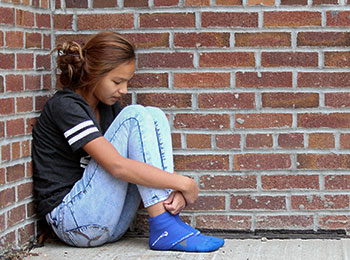The Truth about Teen Dating Violence

What is Teen Dating Violence (TDV)?
Why does it happen?
How do I know TDV when I see it?
What can I do if someone I know is experiencing violence in their relationship?
All this and more was covered with high school students on the Cheyenne River Indian Reservation when staff from Cheyenne River Indian Outreach visited with them about Teen Dating Violence, or TDV.
The presentation began by going over boundaries — what they are, different kinds of boundaries like physical and emotional, and how students can make sure others respect their boundaries.
“It’s really important to set your boundaries and maintain them in your friendships,” said Bree, Outreach Specialist. “If you are unable to tell your friends when they are crossing a line or making you uncomfortable, it becomes much more difficult in a relationship.”
Bree did a simple exercise to help students identify physical boundaries.
“I had a volunteer from the audience stand facing the crowd,” she said. “I simply walked towards them from the front, both sides and the back. I asked them to raise their hand when they became uncomfortable, which was generally the same distance all around. And just like that, they had created a physical boundary with me. Each of us are in charge of making sure people know our boundary and are willing to enforce it. We can’t stress enough the importance of boundaries in a friendship!”
Why is it important to talk about boundaries and teen dating violence?
According to www.loveisrespect.org, females between the ages of 16 and 24 experience the highest rate of intimate partner violence. In addition:
- Nearly 1.5 million high school students nationwide experience physical abuse from a dating partner in a single year.
- One in three adolescents in the U.S. is a victim of physical, sexual, emotional or verbal abuse from a dating partner. This figure far exceeds rates of other types of youth violence.
- One in 10 high school students has been purposefully hit, slapped or physically hurt by a boyfriend or girlfriend.
These frightening statistics make it more important than ever to educate youth on this topic, and give them the tools they need to help themselves and their friends.
Thank you for helping Cheyenne River Indian Outreach share this important education! Together, we can fulfill our mission to eradicate violence and oppressive practices by supporting and empowering individuals, families and communities to promote justice, social change and non-violence.
